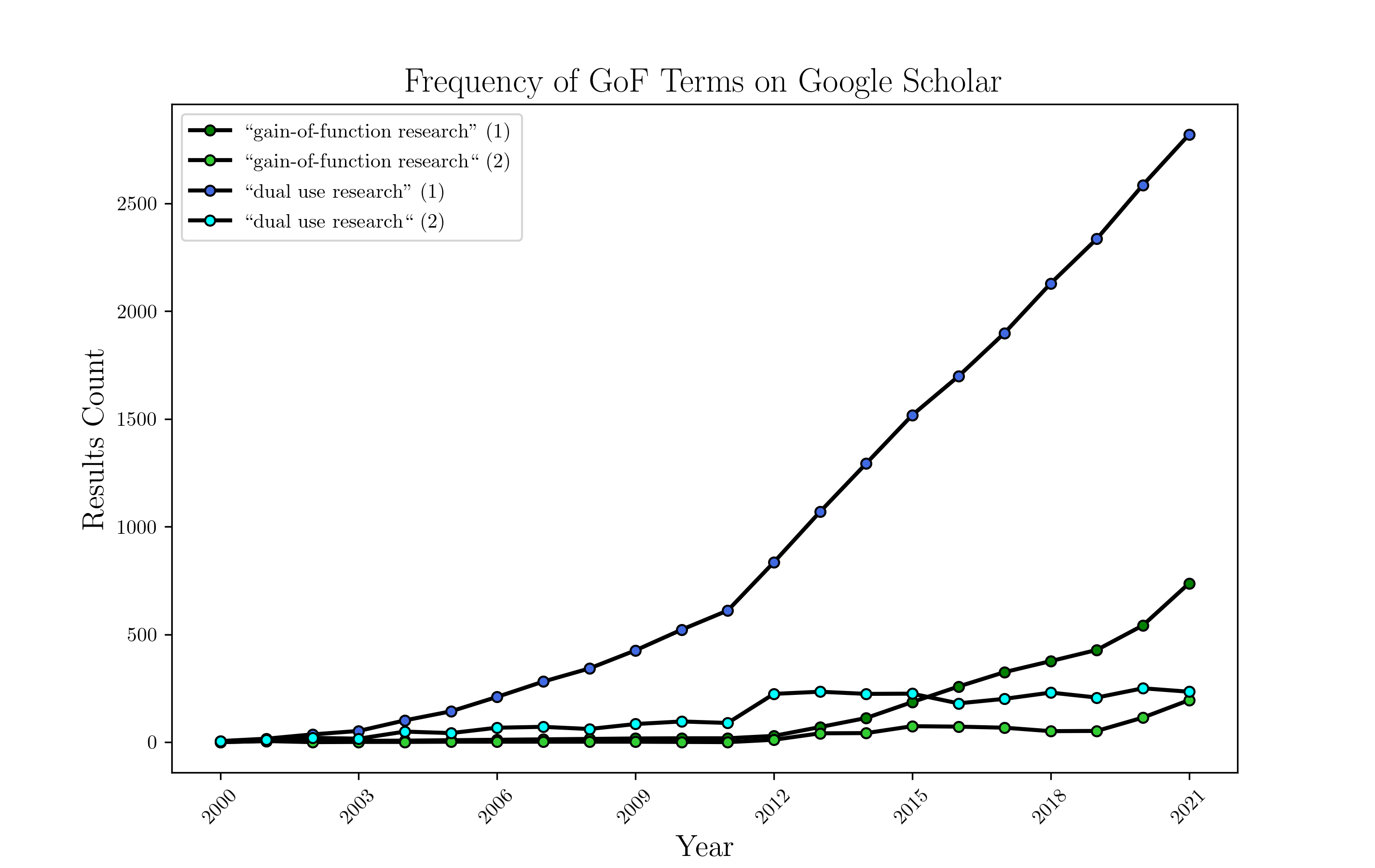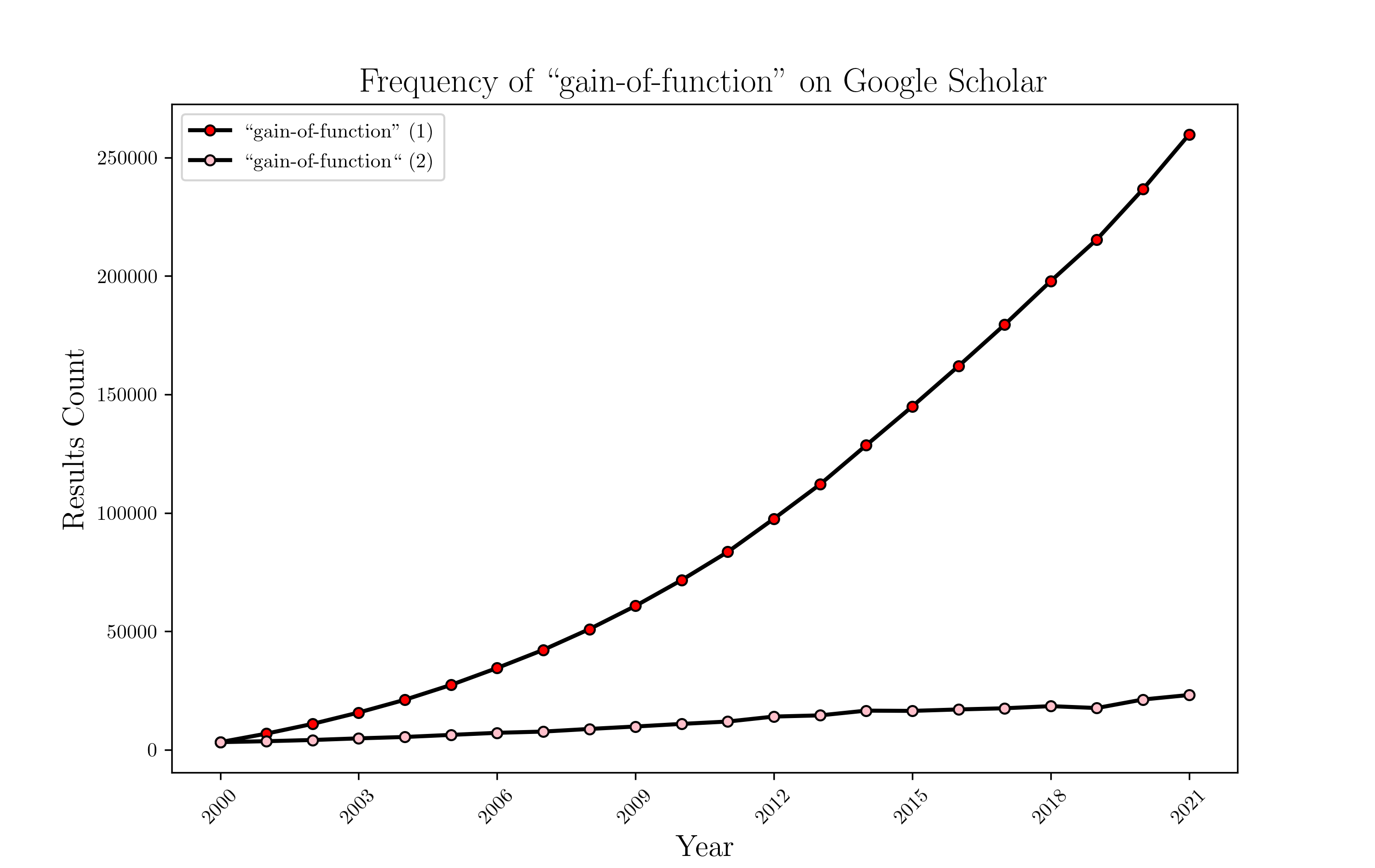Given the advance in underlying biological tools/technology, I would not find it surprising if gain-of-function research had increased 10x over the last decade. (This is just based on priors; getting an actual estimate is the point of this question.)
Why is this interesting? Assuming that both original covid and at least one strain were lab leaks, the rate of growth of gain-of-function research has a huge impact on how often we should expect future pandemics from lab leaks. If the amount of gain-of-function research has been roughly constant over the last 20 years, then the two covid leaks suggest a base rate of something like one or two pandemic-level leaks every 20 years, and covid was probably unusually hard to contain in a lab for some reason on top of that. On the other hand, if the field has grown 10x in the past 5 years, that suggests a base rate more like a leak every 2-3 years (and probably getting faster over time as the field continues to grow). If that's the case, then the base rate for pandemics will be way higher going forward than in the past.














"We saw in Chapter 7 the estimates of the rate of a laboratory acquired infection (LAI) range from 0.000057 to 0.001 per person per year, and the risk of onward transmission ranges from 0.05 to 0.15. If assume that 200 people are working on gain of function experiments in virology involving PPPs, and we place the risk of LAI rate conservatively at 0.0001 per person per year, then this would yield a risk of an LAI of 0.02, or one LAI every fifty years. If we assume the rate of onward transmission of a LAI is 0.15, then this would give us an annual risk a LAI leading to community infection of 0.003, or about one event every three hundred years.
Of course, this estimate of the risk depends on several assumptions we have made, and different people might arrive at different estimates. A great deal depends on how many people are working on this research and their adherence to biosafety protocols. Fouchier, one of the principal investigators who conducted to controversial H5N1 experiments, has estimated the risk of a LAI from this type of work to be 1 LAI per 70,000 persons per year or 0.000014 (0.0014%) per person per year (Fouchier 2015). Fouchier’s risk estimate was based on LAI data for people working in BSL 3 labs. Fouchier estimated the risk of onward transmission of a LAI to be between 0.00000025 and 0.00003 for a probability of onward transmission from a LAI related to this type of work of 1 person per 33 billion years (Fouchier 2015). Other researchers have calculated the risk of onward transmission to be much greater than Fouchier’s estimate. Klotz and Sylvester (2012) estimate the risk of onward transmission of a LAI from gain of function experiments in virology to be 0.003 per laboratory per year or once per 536 years. However, they also factor in the number of labs that may be conducting this research (42) for an estimate of one event every 12.8 years. Lipsitch and Bloom (2012) and Lipsitch and Galvani (2014) also consider the risk of onward transmission of a LAI from this type of research to be much higher than Fouchier’s estimate."
Dual Use Research in the Biomedical Sciences, 2021